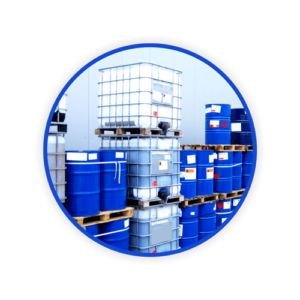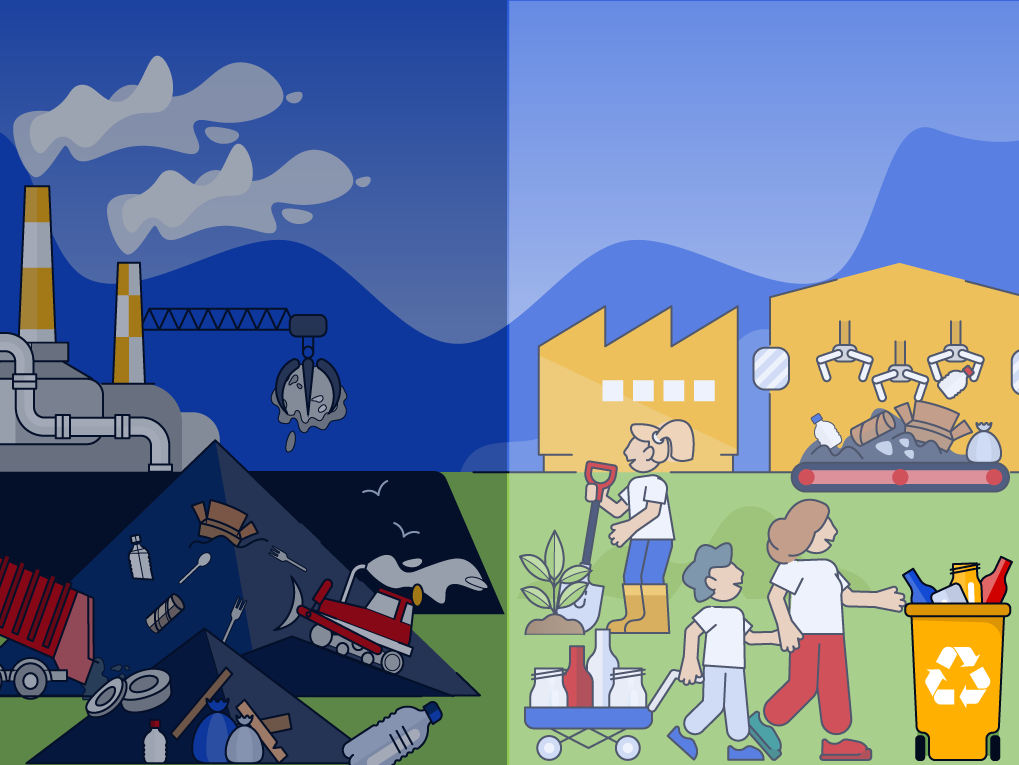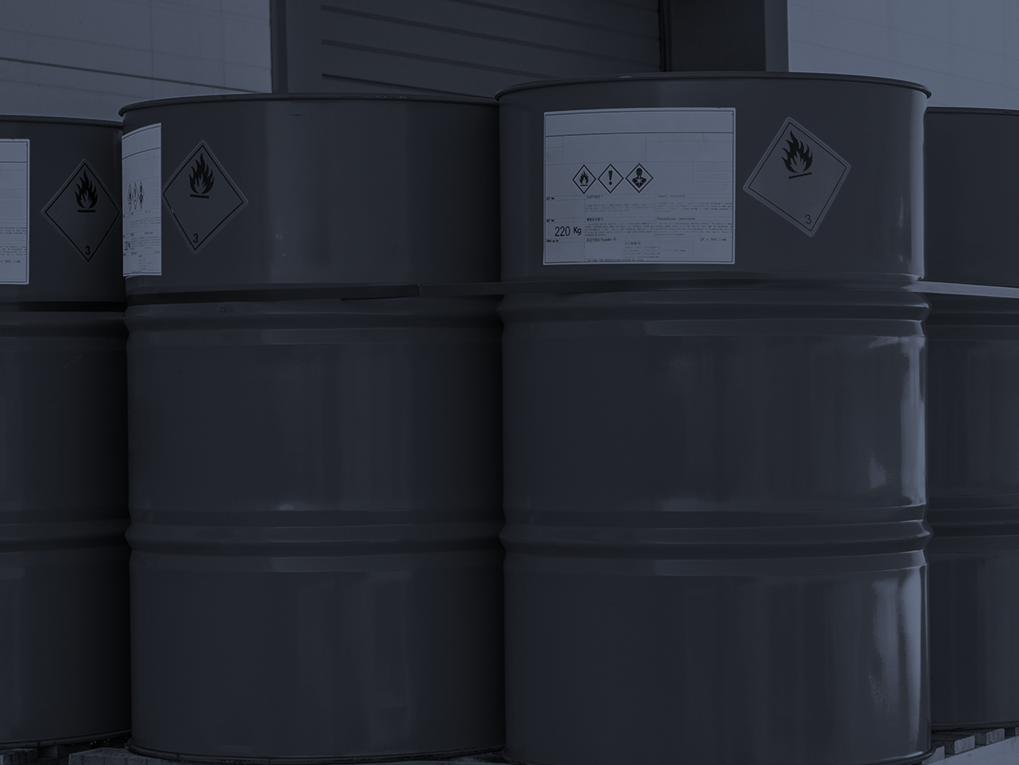Some things we want to last forever: tasty meals, unforgettable holidays, good health. But there’s something we don’t want to last forever: PFAS, the ‘forever chemicals’ this blog is about!
Whilst they’ve offered many benefits over the years, their potential health risks and refusal to break down in the environment have led to growing concern.
Read on to discover all you need to know about PFAS waste and how to best avoid exposure to these persistent chemicals.
- What Is PFAS?
- What Is PFAS Waste?
- Why Is PFAS Waste a Problem?
- How Should PFAS Waste Be Stored?
- What Are the Disposal Options for PFAS?
- How to Avoid PFAS Exposure in the Workplace
- Hazport: Your Partner In Safe PFAS Waste Disposal
What Is PFAS?

Per- and Polyfluoroalkyl Substances (PFAS) is the name given to a synthetic group of chemicals that have raised significant environmental concerns due to their persistence in the environment and the potential health risks associated with them.
These ‘forever chemicals’ have been used widely throughout various industries due to their unique properties, such as resistance to heat, oil, water and stains.
What Is PFAS Waste?
PFAS waste is a type of chemical waste generated from various sources, including:
- Industrial Processes: Manufacturing facilities using PFAS-containing chemicals in their production processes.
- Consumer Products: Discarded products like non-stick cookware, water-repellent clothing and firefighting foams.
- Wastewater Treatment Plants: Wastewater treatment plants may receive PFAS-contaminated water from industrial and municipal sources.
Why Is PFAS Waste a Problem?
So you’ve probably heard a lot about PFAS in general, but perhaps you’ve wondered why they’re such a big deal – you’re not alone!
Here are a few reasons we should all find PFAS a concern:
 Environmental Persistence: PFAS chemicals are highly resistant to breaking down and can remain in the environment for extended periods.
Environmental Persistence: PFAS chemicals are highly resistant to breaking down and can remain in the environment for extended periods.- Bioaccumulation: These chemicals can build up in the bodies of humans and animals, leading to potential health issues over time.
- Water Contamination: PFAS can contaminate water sources, posing risks to both human health and ecosystems.
PFAS in wastewater is a huge concern and can lead to big problems as it easily spreads and can contaminate our food and drinking water. According to the Water Industry Journal, around 17,000 sites in the UK and Europe have been polluted with PFAS. Over 940 of these places have levels of PFAS in their drinking water that are higher than the UK’s safe limit and the actual number of polluted sites is likely even higher.
 How Should PFAS Waste Be Stored?
How Should PFAS Waste Be Stored?
PFAS waste must always be stored properly to prevent environmental contamination and protect human health. Here are some storage guidelines that can help you ensure safe storage:
- Segregation: Separate PFAS waste from other types of waste to avoid cross-contamination or accidental mixing of wastes.
- Containerisation: Store PFAS waste in appropriate leak-proof containers.
- Labelling: Clearly label containers with the type of PFAS waste and potential hazards.
- Ventilation: Ensure adequate ventilation in storage areas to prevent the buildup of harmful fumes.
- Monitoring: Conduct regular inspections to check for any signs of damage or leaking.
What Are the Disposal Options for PFAS?
In line with the most favourable options on the waste hierarchy, prevention and reduction should always be your top priority with PFAS waste. Always consider alternatives to PFAS-containing products to minimise future waste.
When you can’t avoid the use of PFAs, there are three key steps to bear in mind:
- Identify and segregate: Identify PFAS-containing waste and separate it from other waste types.
- Choose a reputable partner: Select a waste disposal company with expertise in handling hazardous materials.
- Comply with regulations: Stay up-to-date with the latest environmental regulations and ensure your practices are compliant.
When it comes to the destruction of ‘forever chemicals’, there are several treatment technologies used to reduce their impact.
Whilst the following methods offer potential solutions, they each come with their downsides, such as the associated costs, energy consumption and the generation of PFAS-contaminated waste.
Advanced Oxidation Processes (AOPs)
The use of powerful chemicals to break down PFAS into smaller, less harmful compounds.
Downside: Can be energy-intensive and may need extra treatment steps.
Thermal Treatment
High-temperature incineration can destroy PFAS as long as it’s burned completely to avoid creating harmful byproducts.
Downside: Uses a lot of energy and must follow strict environmental regulations.
Sorption Techniques
Granular Activated Carbon (GAC)
A porous material that traps PFAS as water passes through it.
Downside: The used carbon needs careful disposal.
Ion Exchange
Special resins attract and hold PFAS, removing them from water.
Downside: The used resins must be disposed of properly.
Membrane Filtration
Reverse Osmosis (RO) and Nanofiltration
These advanced filtration techniques can effectively remove PFAs from water.
Downside: The concentrated water with PFAS needs further treatment or careful disposal.
Ongoing research aims to develop more efficient and environmentally friendly technologies to address this ‘forever chemical’ problem.
 How to Avoid PFAS Exposure in the Workplace
How to Avoid PFAS Exposure in the Workplace
Although often associated with industrial sites and polluted water sources, it’s important to recognise potential exposure risks in the workplace. Here are 10 quick tips to help minimise your exposure to PFAS:
- Stay informed: Keep up-to-date on the latest information about PFAS, their uses, and any potential health risks.
- Know your materials: Be aware of the chemicals and substances you use daily, especially those containing non-stick, water-repellent, or stain-resistant coatings.
- Material selection: Choose PFAS-free alternatives whenever possible for materials, coatings and lubricants.
- Safe handling techniques: Use proper techniques for handling PFAS-containing chemicals, such as minimising transfers and avoiding unnecessary exposure.
- Personal Protective Equipment (PPE): Wear appropriate PPE, such as gloves and masks whenever handling PFAS-containing chemicals or materials.
- Closed systems: Work in closed systems whenever possible to minimise exposure to wider staff.
- Proper hand hygiene: Wash your hands regularly, especially after handling potentially contaminated materials or before eating.
- Regular cleaning: Clean work surfaces and equipment regularly with the appropriate cleaning agents.
- Waste management: Dispose of PFAS waste properly, and in compliance with regulations.
 Emergency procedures: Have a well-defined emergency response plan in place to handle spills and accidents involving PFAS-containing substances.
Emergency procedures: Have a well-defined emergency response plan in place to handle spills and accidents involving PFAS-containing substances.
Remember to check with your health and safety department for any specific advice tailored to your workplace.
Key Takeaways
- PFAS are persistent chemicals that can remain in the environment for a long time.
- They can contaminate water sources and pose risks to human health and ecosystems.
- Proper disposal of PFAS waste is essential to prevent environmental contamination.
- Reducing the use of PFAS-containing products and adopting safer alternatives can help mitigate the problem.
- Workplace safety measures can help minimise exposure to PFAS.
Hazport: Your Partner In Safe PFAS Waste Disposal
Do you have aqueous-related liquids containing PFAS/PFOS that need disposal?
At Hazport, we understand the complexities of PFAS waste management and we’re committed to providing safe and compliant disposal solutions.
Through our partnership with trusted state-of-the-art treatment facilities, we can ensure the safe and effective destruction of PFAS residues within aqueous waste streams at approved temperatures.
By understanding the challenges posed by PFAS waste and taking proactive steps to manage it responsibly, we can contribute to a healthier environment for future generations.
Our experts are here to remove the guesswork.
Please get in touch if you have any aqueous-related liquids containing PFAS/PFOS that you want disposed of safely.
 Partner with Hazport Today
Partner with Hazport Today
Don’t leave your safety and compliance to chance. Partner with Hazport to ensure that your hazardous waste is handled the right way. Our experienced team is ready to support you every step of the way, from identifying and segregating waste to final disposal.
Contact us today to learn more about our hazardous waste services and how we can help you create a safer and more compliant waste management system for your facility.






